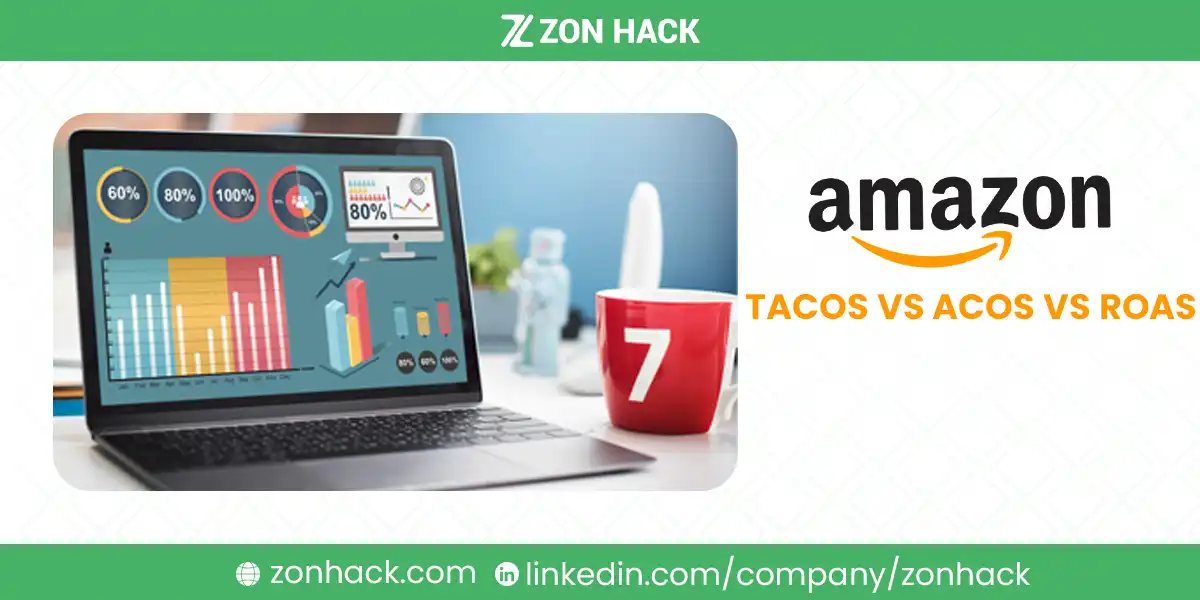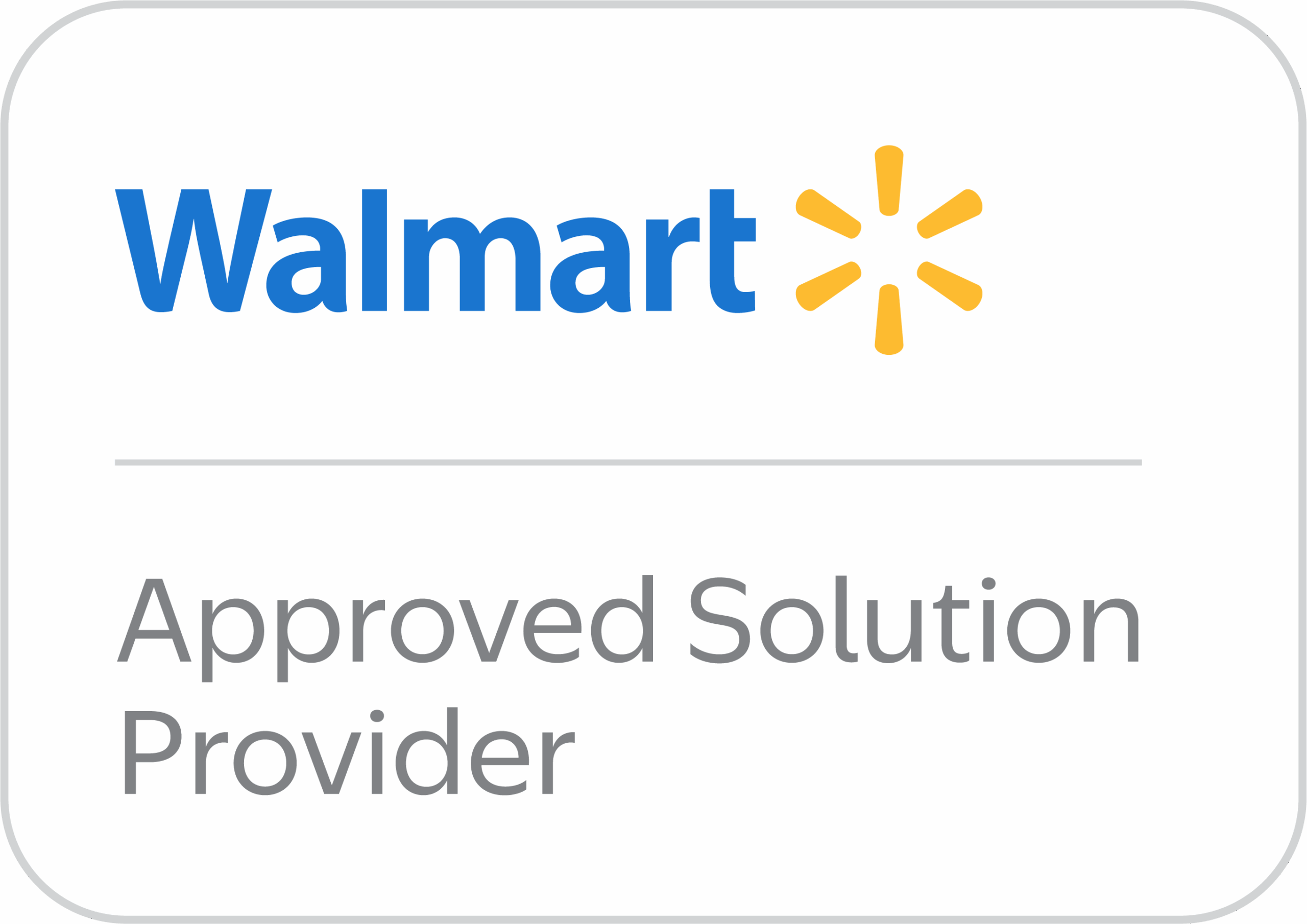If you’re feeling overwhelmed by all the advertising metrics thrown your way, you’re not alone. We’ve spent years helping sellers navigate these waters, and today we’re breaking down three crucial metrics that often cause confusion: TACoS, ACoS, and ROAS.
Before we get into each metric, let us tell you why understanding these numbers is so important. These metrics aren’t just fancy acronyms – they’re your compass for making smart advertising decisions that can significantly impact your bottom line.
What Are TACoS, ACoS, and ROAS?
Let’s unpack these metrics one by one. Think of them as different lenses through which we can view your advertising performance. Each one tells its own unique story about your business.
Overview of TACoS
Total Advertising Cost of Sales (TACoS) is like our bird’s-eye view of advertising efficiency. It’s our go-to metric when we want to understand how advertising impacts the bigger picture of a business.
Here’s what makes TACoS special:
- It looks at your ad spend compared to ALL your sales (including organic)
- The formula is simple: (Ad Spend ÷ Total Revenue) × 100
- A lower number is better – we usually aim for 5-15%
Let us give you a real-world example. If you spend $1,000 on ads and your total sales (both from ads and organic) are $10,000, your TACoS would be 10%. That’s right in the sweet spot!
Overview of ACoS
Advertising Cost of Sales (ACoS) is your direct advertising performance indicator. We use this metric when we want to zoom in on how specific ad campaigns are performing.
Key points about ACoS:
- Only looks at sales directly from ads
- Calculate it as: (Ad Spend ÷ Ad Sales) × 100
- Most sellers aim for 15-30%, depending on their product category
For instance, if you spend $1,300 on ads and generate $3,000 in ad sales, your ACoS would be 43.33%. That might seem high, but it really depends on your product margins and business goals.
Overview of ROAS
Return on Ad Spend (ROAS) is basically ACoS’s optimistic cousin – instead of focusing on costs, it shows your return. We love using ROAS when explaining performance to stakeholders who prefer positive numbers.
ROAS essentials:
- Measures revenue generated per ad dollar spent
- Formula: Ad Sales ÷ Ad Spend
- Aim for 3:1 or higher (meaning $3 in revenue for every $1 spent)
Using our previous example, if your ad sales are $3,000 and you spent $1,000, your ROAS would be 3, meaning you’re getting $3 back for every dollar spent on ads.
Key Differences Between TACoS, ACoS, & ROAS
Let’s break down the key differences in detail:
Scope and Purpose
- TACoS: Provides the broadest view by considering total revenue, including both organic and advertising-generated sales. It helps assess the overall health of your advertising strategy and its impact on your entire business.
- ACoS: Focuses specifically on advertising efficiency by only considering sales directly attributed to ads. It’s crucial for optimizing individual campaigns and understanding direct advertising ROI.
- ROAS: Measures the direct return on advertising investment but presents it as a ratio rather than a percentage, making it easier to understand the return per dollar spent.
Sales Attribution
- TACoS: TACoS captures total revenue impact, covering both organic and ad-driven sales, offering a holistic view of how ads contribute to overall business growth. This broader perspective is valuable for assessing long-term brand impact, as it shows if ads are indirectly boosting organic sales as well.
- ACoS: ACoS focuses solely on sales directly linked to ad spend, making it a sharp measure of campaign efficiency. By isolating only ad-attributed sales, it serves as an essential metric for evaluating how effectively each ad dollar drives immediate revenue.
- ROAS: ROAS evaluates revenue generated per dollar spent on ads, giving a direct profitability ratio. With a focus on ad sales alone, ROAS simplifies tracking return on investment and helps in comparing campaigns quickly for strategic adjustments.
Calculation Method
- TACoS: Using (Advertising Spend ÷ Total Revenue) × 100, TACoS links ad spend to overall revenue. This calculation offers a complete view of how ads impact total business, both directly and indirectly, allowing for more strategic budget planning.
- ACoS: ACoS, calculated as (Advertising Spend ÷ Ad Sales) × 100, measures ad cost against direct ad-driven revenue. This targeted approach makes it easy to assess the short-term efficiency of ad campaigns, guiding improvements to ROI.
- ROAS: Calculated as Ad Sales ÷ Advertising Spend, ROAS yields a simple ratio indicating return per dollar spent on ads. This direct measure of ad revenue generation enables quick comparisons of campaign performance, helping optimize ad budgets effectively.
Target Ranges
- TACoS: A TACoS range of 5-15% is typically favorable, balancing ad spend with overall revenue. This range indicates that ads are supporting growth while allowing for healthy organic sales, guiding balanced ad budget allocation.
- ACoS: An ACoS between 15-30% is usually considered sustainable, indicating efficient ad spending. Lower ACoS signals high conversion rates, while a higher range suggests potential for optimizing ad strategies to control costs.
- ROAS: A desirable ROAS is 3:1 or higher, showing that every dollar spent on ads generates at least three dollars in revenue. This target helps ensure ad spending is effectively translating into profits, supporting decisions on campaign scaling.
Here’s a comprehensive comparison table:
| Aspect | TACoS | ACoS | ROAS |
| Full Name | Total Advertising Cost of Sales | Advertising Cost of Sales | Return on Ad Spend |
| Primary Focus | Overall business impact | Direct advertising costs | Return on investment |
| Sales Considered | All sales (organic + ad) | Only ad-attributed sales | Only ad-attributed sales |
| Formula | (Ad Spend ÷ Total Revenue) × 100 | (Ad Spend ÷ Ad Sales) × 100 | Ad Sales ÷ Ad Spend |
| Ideal Range | 5-15% | 15-30% | 3:1 or higher |
| Lower/Higher Better | Lower is better | Lower is better | Higher is better |
| Best Use Case | Overall strategy assessment | Campaign optimization | Budget allocation |
When to Use Which Metric?
We find these metrics work best in different scenarios:
TACoS is our go-to when we need to:
- Evaluate overall advertising strategy
- Track organic sales growth
- Make long-term business decisions
We use ACoS when we want to:
- Compare different ad campaigns
- Optimize individual product listings
- Set specific campaign goals
ROAS comes in handy when we’re:
- Planning budget allocations
- Reporting to investors or partners
- Making scaling decisions
Conclusion
Understanding these metrics has transformed how we approach Amazon advertising, and we’re confident it can do the same for you. Remember, there’s no “perfect” metric – it’s about using the right one for your specific needs and goals.
We’ve found that the most successful sellers don’t fixate on just one metric but use all three in harmony to get a complete picture of their advertising performance. Start by tracking these metrics for your campaigns, and you’ll quickly develop an intuition for what the numbers are telling you.




